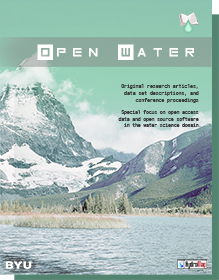Article Title
Google Earth Engine Tools for Long-Term Spatiotemporal Monitoring of Chlorophyll-a Concentrations
Keywords
Earth Observation Data, Remote Sensing, Chlorophyll, Google Earth Engine, Automated Tools
Abstract
We present a set of Google Earth Engine (GEE) tools to process long-term satellite imagery to analyze the time history of algal concentrations in a lake or reservoir. We demonstrate these tools with a case study on Utah Lake, Utah, USA. Our tools collect and process Landsat surface reflectance images from three different Landsat missions: Landsat 5, Landsat 7, and Landsat 8. These satellites represent data from 1984 until the present at 16-day intervals: over 1,000 images, though not all images are usable due to weather, ice, and other issues. We present the GEE commands or tools to mask these images to only include pixels in a selected region around a selected water body (spatial masking); pixels that represent the water, as most water bodies change size due to fluctuating water levels (classification masking); and pixels that meet a quality threshold to exclude pixels with issues that affect model accuracy (quality masking). The quality masking excludes pixels that contain clouds, significant atmospheric moisture, or other issues that would affect the accuracy of the data. We perform quality masking based on metadata included in the Landsat level 2 data quality band. After masking, the remaining pixels represent the extent of the visible water body at the time of the image. We use GEE to implement an empirical model from the literature to estimate the chlorophyll-a (chl-a) concentration in each pixel for each image over the entire 40-year history. The model is slightly different for different satellite collections. To determine if there are trends in the data, we implemented the nonparametric Mann-Kendall test and applied it to the computed chl-a concentration images. The Mann-Kendall test determines the presence, magnitude, and statistical significance of algal growth trends. To demonstrate the Mann-Kendall test, we used a subset of 31 images from the month of July over a 16-year period—1999 to 2015—and determined algal growth trends for each pixel during this period. For our case study of Utah Lake, we found that there was no statistically significant trend in the majority of the lake, with only the Provo Bay area, a hydrologically isolated bay, demonstrating a small statistically significant upward trend. While the GEE tools we implemented have inputs specific to Utah Lake, Landsat data, and chl-a concentrations, these tools can be easily modified and be applied to other lakes, satellites, and water quality parameters. If different satellites, lakes, or water quality parameters are used, then our empirical models and spatial boundaries would need to be modified for the selected satellite, lake, and parameter.
BYU ScholarsArchive Citation
Cardall, Anna; Tanner, Kaylee Brook; and Williams, Gustavious Paul
(2021)
"Google Earth Engine Tools for Long-Term Spatiotemporal Monitoring of Chlorophyll-a Concentrations,"
Open Water Journal: Vol. 7:
Iss.
1, Article 4.
Available at:
https://scholarsarchive.byu.edu/openwater/vol7/iss1/4
